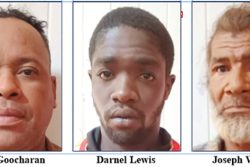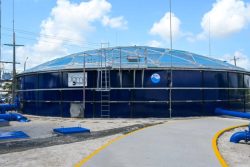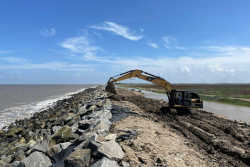The murder of People’s Progressive Party stalwart and former Vice-Chairman of the Essequibo Islands-West Demerara Region Ramenauth Bisram last month has opened a can of worms in legal and political circles and in the security community.
Issues of the conduct of police investigations, professional integrity, public safety and political interference converged last week after a full frontal photograph of a severely burned teenager and lurid details of his arrest, detention and torture were published in the newspapers. As Ralph Ramkarran − Speaker of the National Assembly and PPP executive − pointed out, these acts “can no longer be hidden from public view.” He acknowledged that the fact that “reports of torture supported by photographic evidence are surfacing more regularly suggests that no mechanisms are in place to prevent abuses.”
Coming after a decade of unexplained extra-judicial killings and collaboration with self-confessed narco-traffickers during the protracted troubles on the East Coast, these fresh allegations of torture have destroyed the respect that the public should have for the Guyana Police Force.
The administration’s present dilemma has arisen out of the arrest, detention and torture of suspects in the Bisram murder by the force’s Criminal Investigation Department. The problem is that this is not the first time that allegations of torture have been levelled against the Guyana Police Force and Guyana Defence Force. The difference is that officials have dismissed previous reports.
The blasé response of Minister of Home Affairs Clement Rohee to questions about the torture of Buxtonians Patrick Sumner and Victor Jones in December 2007 was that Guyanese are more concerned about the goodies arriving in their barrels from overseas, acquiring a house lot and their own home, than the torture of the men by the security forces. Three soldiers − Alvin Wilson, Sharth Robertson and Michael Dunn − also complained of having been tortured.
President Bharrat Jagdeo in November last year, while claiming that his administration does not condone torture, asserted that his government “does not view any of the reports [of the injuries to the Buxtonians] that had been circulating as ‘torture’ reports.” He suggested that the country needed “to understand the context of the torture allegations.” It is the President who needs to understand that there is no “context” in which a crime against humanity − especially against unarmed citizens − can be legally justified.
The Guyana Human Rights Association blamed the political authorities for “covering-up previous incidents of torture by preventing effective investigation, blocking publication of reports, downplaying the seriousness of torture in Parliament and repeatedly referring to ‘killing’ or ‘eradicating’ criminals rather than adopt language which promotes the rule of law.”
To make bad worse, Rohee tried clumsily to deflect attention from the culpability of the Criminal Investigation Department of which Assistant Commissioner Seelall Persaud is the head. He suggested that there should be a major shake-up in the West Demerara police division of which Assistant Commissioner Paulette Morrison is the divisional commander.
He ignores the fact that the two persons – Detective Sergeant Narine Lall and Constable Mohanram Dolai – who have been charged with unlawful and felonious wounding in the present case are members of the CID. The decision to appoint Heeralall Makhanlall, a former Assistant Commissioner and Persaud’s predecessor as Head of the CID to lead an internal investigation will completely deprive his findings of impartiality and credibility.
President Jagdeo described the torture of the 14-year-old detainee as “a terrible stain” and worried about “the damage that it does to the reputation of the police force and the image that we are trying to create.” In fact it is much worse. The stain has degenerated into a running sore and the image of the force as an institution committed to protecting the public has been shattered.






